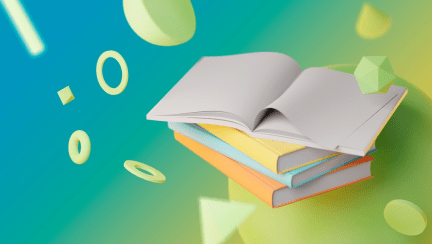Micro-Cheating in Academia: Definition, Examples & Impact
Academic integrity conversations in 2024–2025 are no longer limited to plagiarism or overt exam cheating. A subtler form of dishonesty — micro-cheating — has emerged as a pressing issue. Unlike traditional misconduct, micro-cheating involves minor breaches of honesty: copying assignment structures, reusing templates, or paraphrasing without proper attribution.
With the rise of generative AI tools, massive online repositories of coursework, and “study aid” platforms, these practices are increasingly common yet harder to detect. The real challenge is not just enforcing rules but shaping long-term ethical habits that influence future research, professional standards, and public trust.
What Is Micro-Cheating in Academia?
Micro-cheating refers to subtle, often overlooked acts that fall short of full plagiarism but still undermine originality.
Common examples include:
- Copying the outline or structure of a peer’s essay rather than their content.
- Reusing old assignment templates without acknowledgment.
- Slightly modifying AI-generated answers instead of producing original work.
- Using solution banks or shared coursework when not allowed.
- Collaborating in unauthorized ways (e.g., swapping model answers).
The concept mirrors its use in relationships — minor breaches of trust that stop short of outright betrayal. In academia, these practices blur boundaries, leaving students and faculty uncertain whether such acts qualify as misconduct.
The ambiguity makes micro-cheating particularly problematic: students often don’t perceive it as cheating, while universities lack policies to define it clearly.
Why It Matters: Educational and Ethical Implications
Even small forms of dishonesty can have lasting effects:
Academic impact: Professors struggle to assess real learning when work reflects borrowed frameworks rather than original reasoning.
Professional impact: Graduates who normalize shortcuts risk credibility in fields like medicine, law, or research.
Cultural impact: Allowing minor breaches weakens academic communities and blurs collaboration boundaries.
A 2023 OECD report emphasized that small-scale dishonest acts, if unchecked, often accumulate into systemic issues. Ethical studies echo this finding: “everyday dishonesty” tends to escalate when normalized.
Data and Research Insights
Recent studies highlight a shift from blatant plagiarism toward gray-zone behaviors:
- A 2024 study in Assessment & Evaluation in Higher Education reported that 42% of students admitted to reusing assignment structures despite instructions for independent work.
- Research in SAGE Open (2023) found AI tools like ChatGPT encouraged template-based micro-cheating by providing ready-made outlines.
- EDUCAUSE (2025) revealed that 1 in 3 faculty members report “integrity fatigue,” unsure how to classify micro-cheating behaviors.
Key Statistics
| Insight | Finding | Source |
|---|---|---|
| Students copying structures | 42% admitted borrowing assignment frameworks | Assessment & Evaluation in Higher Education, 2024 |
| Faculty classification difficulty | 1 in 3 professors struggle with defining micro-cheating | EDUCAUSE, 2025 |
| AI influence | Over 50% of educators believe AI blurs lines between learning aids and misconduct | SAGE Open, 2023 |
| Student perception | 60% of students see no harm in reusing frameworks | OECD Pilot Study, 2023 |
Real-Life Scenario: The Copy-Paste Outline
Imagine Emma, a first-year student. She doesn’t copy her roommate’s essay word-for-word but mirrors its skeleton: introduction, three identical argument structures, and a mirrored conclusion.
Her professor notices both papers differ in wording but share the same outline. Is it plagiarism? Technically, no. Yet Emma loses the opportunity to practice independent reasoning. Multiplied across an entire class, this practice produces students who can format essays but lack analytical depth.
Technology as a Driver of Micro-Cheating
Digital tools amplify the issue:
- Generative AI (ChatGPT, Gemini, Claude) generates instant outlines, reducing incentives for independent thinking.
- Course-sharing platforms (Course Hero, Chegg) provide access to past assignments, often adapted rather than recreated.
- Collaborative spaces (Google Docs, Discord groups) blur lines between teamwork and misconduct.
A Brookings report (2024) warns that AI’s integration into higher education risks fostering dependency if not paired with clear integrity frameworks.
Practical Recommendations
For Educators
Clarify boundaries: Define explicitly whether using templates or borrowed structures is acceptable.
Redesign assignments: Add reflective or personalized prompts.
Promote integrity skills: Teach paraphrasing, citation, and idea development.
Leverage technology as teaching aids: Use plagiarism and AI detection not only to catch violations but also to educate.
Encourage reflection: Ask students to explain why they chose a specific structure.
For Students
Use templates responsibly: Always acknowledge or significantly adapt them.
Think critically: Ask, “Am I learning reasoning, or just formatting?”
Use AI transparently: Treat outlines as brainstorming tools, not finished work.
Cite even small aids: Integrity builds from small actions.
Seek guidance: When in doubt, consult instructors.
Beyond the Classroom: Wider Implications
Micro-cheating reflects broader integrity challenges:
- In research, shortcuts can result in flawed methodologies or even retractions.
- In professional settings, small ethical lapses may scale into corporate misconduct.
- In policy, governments are embedding digital integrity training into curricula.
For instance, Carnegie Mellon University (2024) piloted orientation modules focusing on micro-level academic behaviors. Early results showed students better internalized values when “small-scale” integrity was addressed directly.
Small Acts, Big Signals
Micro-cheating is not always malicious — it often reflects confusion, pressure, or misplaced priorities. Yet its danger lies in the precedent: small acts normalize larger breaches.
As education adapts to AI and digital ecosystems in 2025, institutions must:
- Define clearer boundaries.
- Equip faculty with tools and policies.
- Teach students how to navigate gray zones ethically.
The future of academic integrity depends on addressing not only plagiarism but also these subtler forms of misconduct. Integrity starts with the smallest choices — and those choices shape entire academic cultures.


Micro-Cheating in Academia: Definition, Examples & Impact
Academic integrity conversations in 2024–2025 are no longer limited to plagiarism or overt exam cheating. A subtler form of dishonesty […]

AI Tools Changing Academic Support
A Turning Point in Education Artificial intelligence has quietly reshaped academic life. Far from being just a cause for cheating […]

Human vs Algorithm: Who Grades Writing More Fairly in Hybrid Classrooms?
Hybrid classrooms, where online and in-person teaching merge, are reshaping how students are evaluated. In this environment, the fairness of […]










